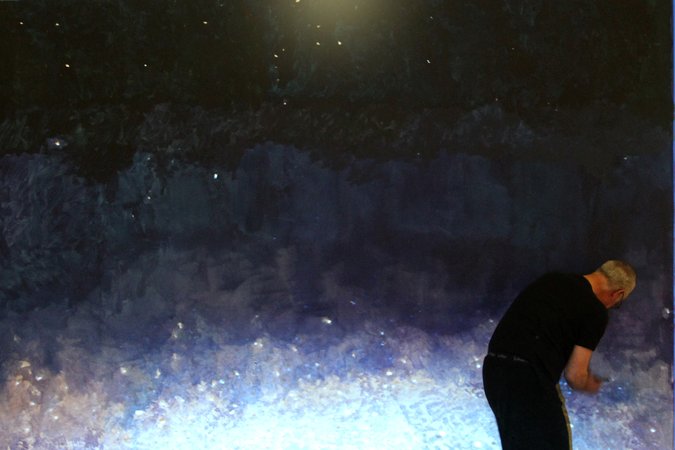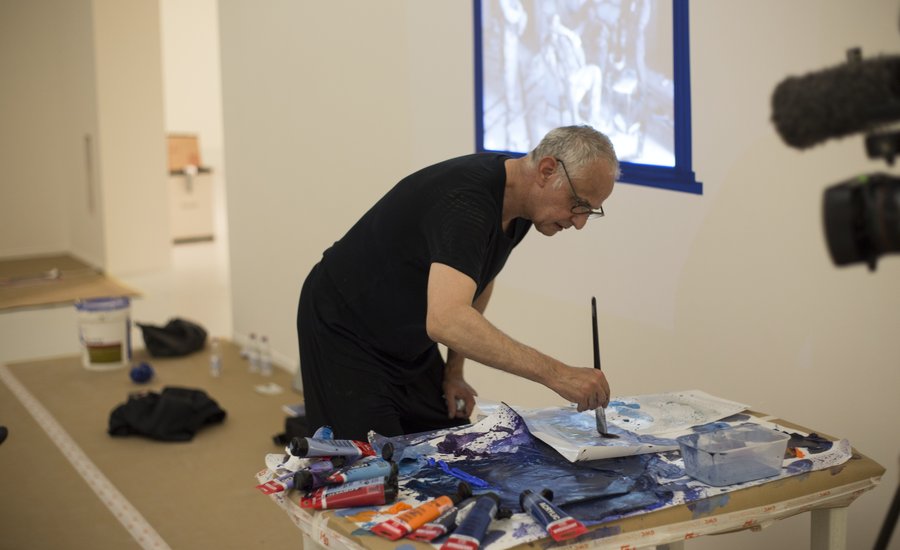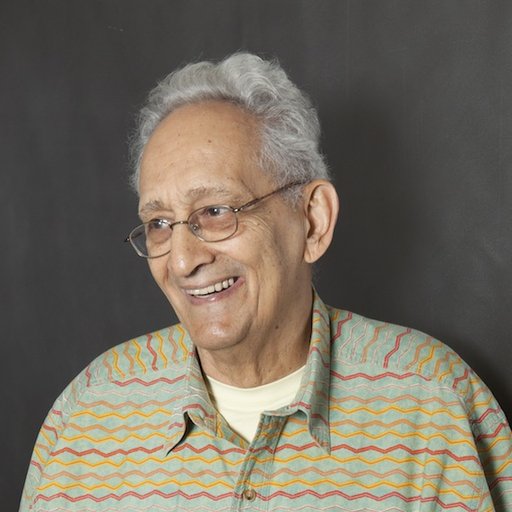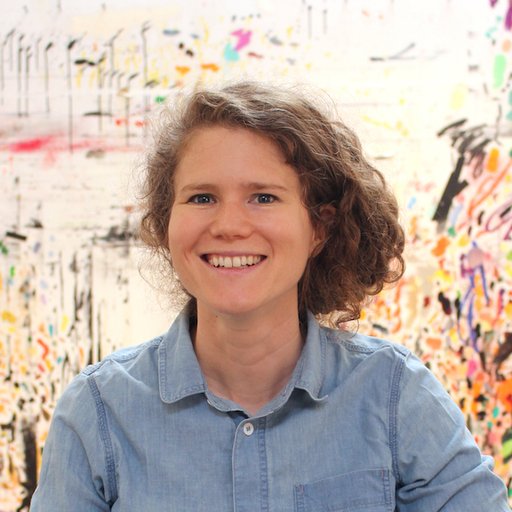Although he is an accomplished figurative painter, the Belgian artist Luc Tuymans has always had a strong abstract element in his work. His paintings, he likes to say, "border on the idea of abstraction." Nonetheless, he has struggled with the artistic approach from time to time. Over the years he’s found abstraction "existential" and "tormented," and has felt "suffocated" by it, as he said in his Phaidon monograph of 2003.
That has not stopped him from curating a show of abstract artists, "The Gap," for the small London gallery Parasol Unit, on the borders of Shoreditch and Islington. The show, which runs through December 6, features 40 works by two generations of Belgian artists in a variety of media. It mingles contemporary abstractionists with historical practitioners of the art—a number of whom were exhibited in the show "G58," held in the year and the town in which Tuymans was born (Mortsel, 1958).
“In that show you had some of the people I’m showing here. There were links with the Zero movement, and also with Lucio Fontana and Piero Manzoni. They were up front with this type of avant-garde after the war,” he says. “Then it dispersed itself, the scene became isolated and all these links sort of disappeared.”
"The Gap" is his attempt to restore those ties between the Belgian avant-garde and its counterparts elsewhere in Europe, at a time when works by Fontana, Manzoni, Yves Klein, and others in their Italian and French circles are being pored over in academic circles and coveted by collectors. Below, Tuymans discusses the show, the history of postwar abstraction, and his upcoming retrospective in Doha with Phaidon digital editorial director Mat Smith.
 All photos by Waqas Farid
All photos by Waqas Farid
Belgium has a fine history of figurative painters, yet here you are doing a show of abstraction.
Yeah, well just because I’m a figurative painter that doesn’t mean I don’t like abstraction. I’ve always been, quite adamantly, an admirer of Mondrian—who actually was a very good figurative painter to begin with. He was a good painter altogether from the start, a bit better than Malevich or Cézanne. And then I was always mad about the black works of Ad Reinhardt, which I still love, or the Seagram paintings of Rothko, of which you have beautiful pairings in the Tate Modern. And even my work, although figurative, sometimes borders on the idea of abstraction.
Many of the artists you’re showing are friends; your wife, Carla Arocha, is included as well. Is it okay to bring the personal into the curatorial process?
It’s probably not what curators do, but a curator that works in an art historical way would probably not do this show in a similar way. He would make different connections that would be more art historical and less visual. So, in that sense, I’m not a curator. It’s not that I’m competing with that or fighting or opposing that—because I think we need curators—but this is an artist-curated show so of course you will have that visual element.
What are the other elements can an artist-curator bring to the table, as opposed to a “professional” curator?
Well, the speed at which I can work is far greater than that of any curator. The very first show I curated was the "Trouble Spot" painting show in Antwerp in 2000. It was a far larger show, but there, if I needed a Robert Gober, I just phoned him. I had Michelangelo Pistoletto come over and install his work, and Ellsworth Kelly and Robert Ryman too, for that matter. They’re colleagues and in that sense there’s a collegiality and so there’s a different understanding.
Early in your career, you turned your back on abstraction for a time and went into filmmaking.
Yeah, but my sense of abstraction was a little bit ridiculous in the sense that it was juvenile and colorful and gestural. Not that it didn’t show any talent—it probably did in terms of how the paint was applied and how I pushed it around—but in a sense it didn’t really sufficiently cover what I was trying to do and therefore I just stopped it and went filming and the filming experience sort of influenced and informed the work that came after that.

Do you think Belgium’s abstractionist history been underrecognized—overlooked in favor of its contribution to Surrealism, and overshadowed by the history of abstraction in America?
Clearly so. At the end of the Second World War and at the beginning of the '50s, the CIA went into a covert operation where they actually made American art. After they won the war they were on top of the world in every which way and they needed a cultural stance to accompany that, so they had this fantastic idea to do this covert operation. Of course Jackson Pollock and Rothko didn’t know that because they would never have agreed to go along with it. And ultimately it seemed to be quite an altruistic proposition in a way. I think it’s quite interesting that the same thing is happening in China. The Chinese have always taken culture as a quite important element in their society—the emperors even wrote poems.
When you think back to Abstract Expressionism you think of that defining moment, the aftermath of the Second World War. Is there an event or period that defines contemporary abstraction?
Well, there are several takes on this. If you go to South America you will see that the idea of modernism has had a completely different life. The element of the hard edge is a different signifier than it is in European or even American abstraction. I think also the empowering effect of Minimalism—which became a sort of new classicism within the realm of the art world, an art that was clearly meant to institutionalize itself—has, on the one hand, made a ring of protection. On the other hand it has also opened up a formal element which is, in my opinion, quite ambiguous.
I think most abstraction comes out of the element of dispersion, and this was already clear in 1925 when Mondrian made the remark that you could not perceive the world as a whole anymore—you could only see it in particles. Now if we think about the size of particles at the reactor in Cern, where they found the "God particle," this is something that you can’t even see.
But to bring it back to one particular moment in time, in terms of abstraction now I would say that it is actually also has a lot to do with the digitalized world.
Your fellow artist and friend Ai Weiwei has embraced this world—perhaps for no other reason than because, until very recently, he was physically excluded from the real one by the Chinese government.
Yeah, his blog was already ongoing years ago when we met. I think that was a very self-evident thing to do in China because it’s the thing that’s very difficult to control—although they tried to control it. I know other artists who only make art in that medium and work in a way that is far more difficult to detect. In that way they are actually enemies of the state in China. That’s not what Ai does.
My proposition to him was that he could have his blog until he was 86 and become a clown or we could actually delve ourselves into the system and see what could be done.
You worked with Ai on “The State of Things,” a show of contemporary artists in Brussels and in Beijing in 2010, didn’t you?
Yes. I had two experiences there. The first one was an extremely brutal one, because they totally destroyed the entire concept of the show [a look at the traditional art of Flanders from the 15th century to the 20th century in collision with old Chinese masters]. I told myself this was not going to happen twice. So that’s why I also asked Ai to help me the next time because he has an element of power that I needed—not that he is a bully. His position is a position of power, any way you look at it, and that power is mainly lionized by the West, and the West lionizes that power without knowing how things really happen in China.
How do you think things happen there?
Either way you look at it, that centralized power has never changed. Even under Mao it was still centralized power—so everything can change with extreme speed in terms of decision-making—but it is so large and so complex that it can take time. Five years ago there was still an element of slapstick. You would see girls on the street with t-shirts saying “Sexy Girl” or “Diet Cock,” and now they know how to use the iPhone, they are learning English, so this society is in uproar. And they are extremely efficient.
Next month you’re showing new work as part of a retrospective in Doha which has the rather combative title of “Intolerance.”
Yes. In terms of the title there are two links. There is the link with [The Birth of a Nation director] D.W. Griffith. It was one of the biggest super-productions ever made in the realm of film, with real elephants and the whole orientalist, exotic whatever. He was quite an authoritarian filmmaker. And for the painting, which is far smaller than that film in terms of format, I just assembled all my mother’s candlestick holders—the most horrible candleholders from the '70s—and put them on the chimney on the mantelpiece. If you look at all these mantelpieces, they look like altars in a sense. So I lined them all up and you get a sort of Giorgio Morandi-like feel. That painting is also called Intolerance [the title of Griffith's follow-up film to The Birth of a Nation]. Coming from a Catholic upbringing doomed me.
The whole idea is to give them a show about something they don’t have, which is Western image-building. It’s a clear stance toward the ideas of power and religion and it’s also by far the biggest show of my work ever done—160 loans and there were six works made especially for the show. They're called The Arena.
You’ve used this title before in a show and book called Arena, which center on the Holocaust and religious belief. Is there a link?
No. The interesting part about it is that this new group of work came about because the sheikh, on one of my preparatory visits for this show, said, “You’re some kind of a political artist. Why don’t you make something about the region?” That is quite difficult because it’s like opening a can of worms. So I said, “I don’t think I’m ready for that, so I will make something for the region.”
Two months later my wife and I were visiting friends in Madrid and I was of course again in the Prado and looking at the "Pinturas negras," the black paintings of Goya, and some of them—levitating figures, one with a scissor and a sort of loop—struck me as having something to do with the region. Immediately that sort of triggered other imagery, namely of an old work which is going to be in Doha which is a mixed-media work. It’s actually a collage, painted with a screen in front of it. I liked the idea of the sort of “unsharpness” to it, and its depiction of the idea of violence. I also remembered that before closing that off I once took the screen away and filmed it, and out of those film stills I created a group of paintings also called The Arena, which is interesting because then the show goes nearly full circle.
Your work centers on photographic source material. What photos would we find on your phone—a pretty abused-looking iPhone 3—at the moment?
Well I don’t know if it will be interesting—wait a minute. [He flips to a photo of a painting in his studio.] This was taken before I left to come here. It’s called Murky Water. My next show, actually, is going to be about photographs that family members of mine took in Zundert, the village where my mother was born, which is also where van Gogh used to live as a kid, and it's about flower parades and murky water. And the title of the show is called “Le Mépris,” or "Contempt." It’ll happen in January [at David Zwirner] in New York.























